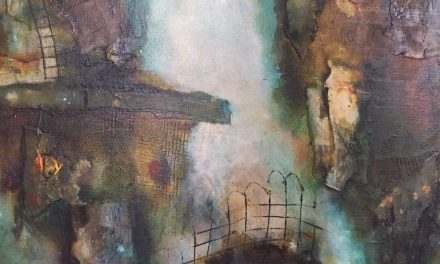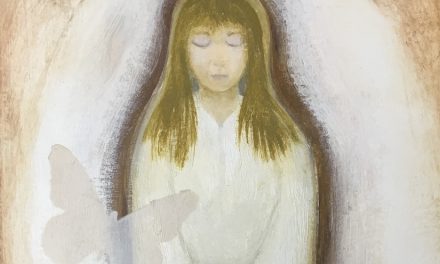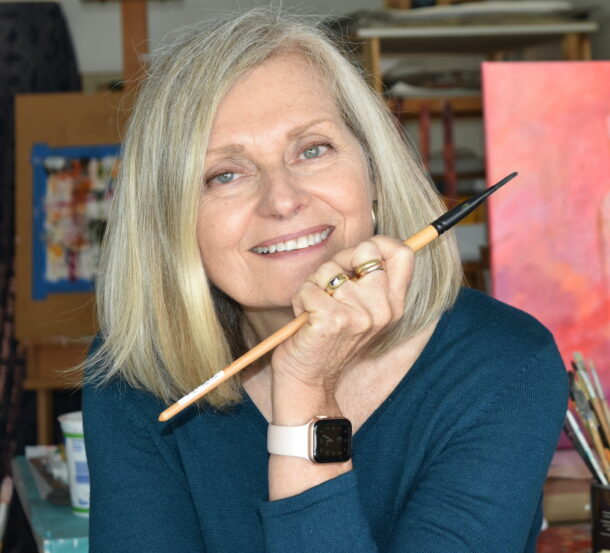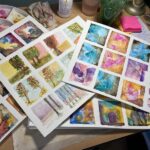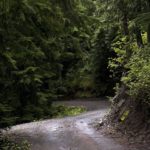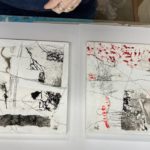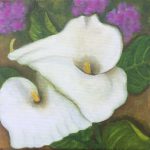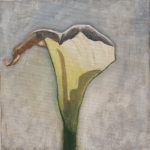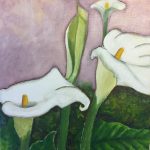After the last blog post was written, I kept wondering what got me so engaged with portraying what I see and then started working with water colors. To tell the truth I was just about to go back to more abstraction when my husband came upstairs to show me what he had just picked from the garden: the first little zucchini from our first ever attempt at growing squash.
“I have to paint this! To commemorate history.”
I got out water color paper, a little notebook and just sat down to paint. Some of you may have noticed the final piece on my Instagram feed. To tell the truth I think I just got lucky and I loved the curve of the stem. I was surprised at the result to tell the truth.
To see if it was an accidental success, I had to keep working on a few more little water color paintings. Back again to painting what I see sitting on the table in front of me.

I used them to start trying to make videos in case anyone was interested in the process. That turned into an iMovie challenge and the learning curve was a little bumpy. I’m feeling more confident about shooting and editing videos (admittedly I still have a LOT to learn!).
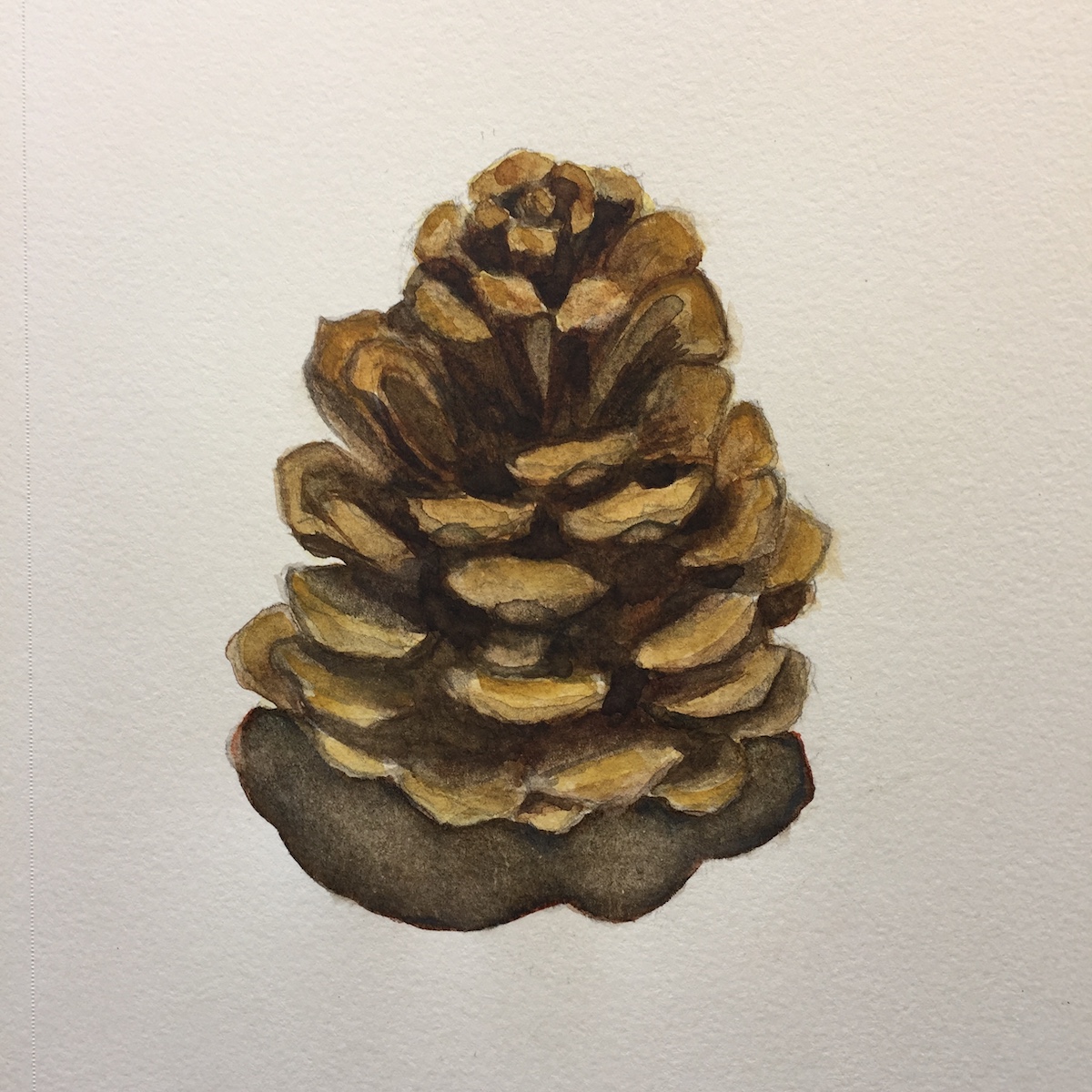
For me drawing and painting what I see is a skill toward and end—paying attention to light, color variations, shadows, textures, lines and how many details to include. But for me this kind of art is an exercise. I really feel called to work more conceptually and abstractly. I had to learn that, yet those are the images that come to me when I’m reading the Bible or listening to songs, and reading devotionals. That is where my heart is.
I had to take a break in painting those few real things and developed a little sketch I had on a post it. I loved the comments that I read because it reminded me of what I think I am called to do. There are a whole lot of painters who can paint reality a whole lot better than I ever will.

I think that wanting to paint what we can’t see—what is UNseen, but is still real—is what artists of faith are called to do. We want to communicate, not just relay, reality. For me the greatest part of creating is to find out what others see in the artwork! It is not about me as much as being true to the inspiration and letting it go.
God gave me a little taste of that soon ater he “asked” me to turn over my art talent to Him, which I thought was a very odd thing for him to do, but how could I refuse? We were living in Syria at the time.
I was asked to participate in an art show at the USIS center. I had some paintings to show and some new ones that I had done after the agreement with God. No one at the time even knew about that whole experience because I kept it to myself, rather doubting the whole thing.
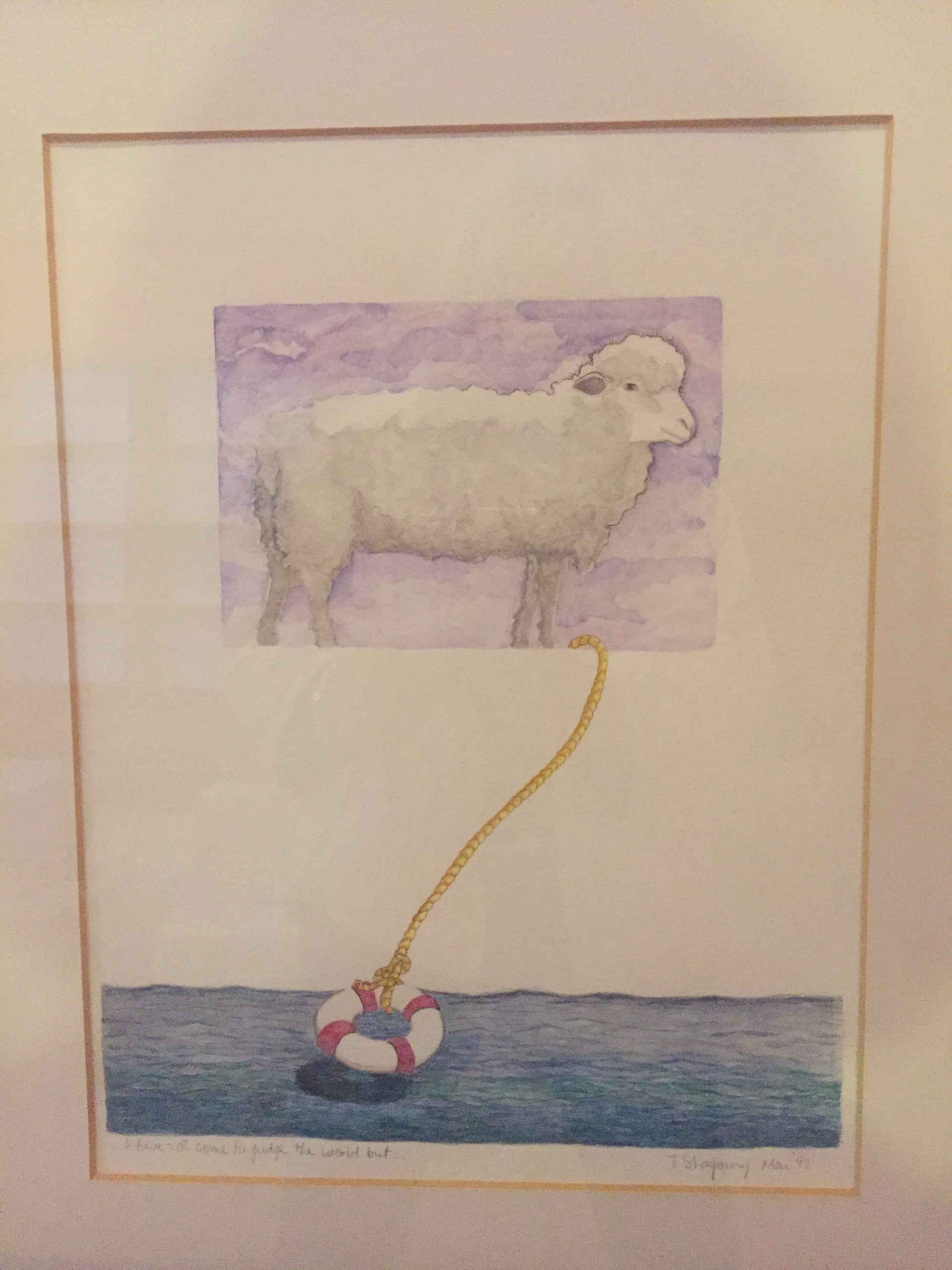
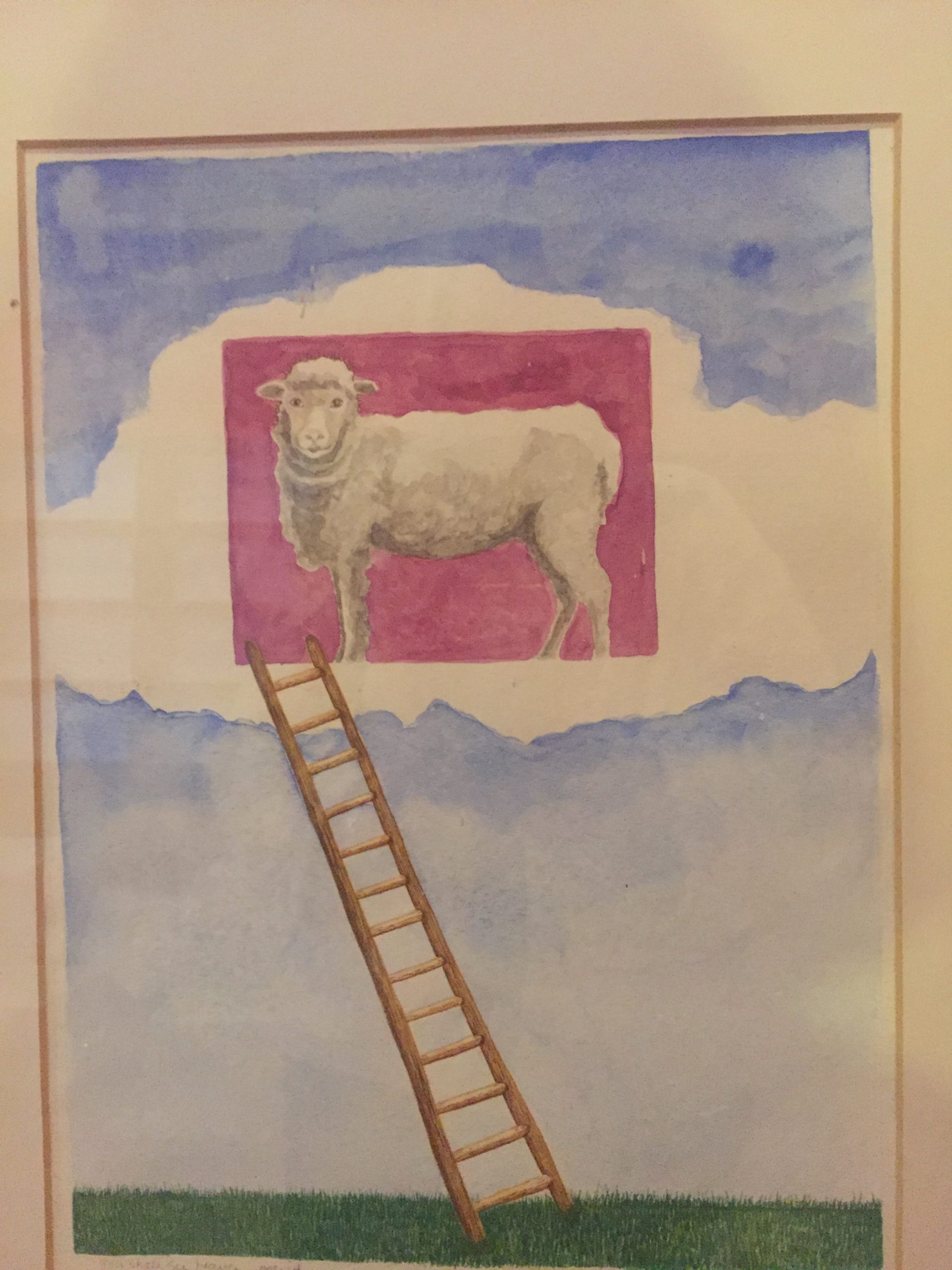
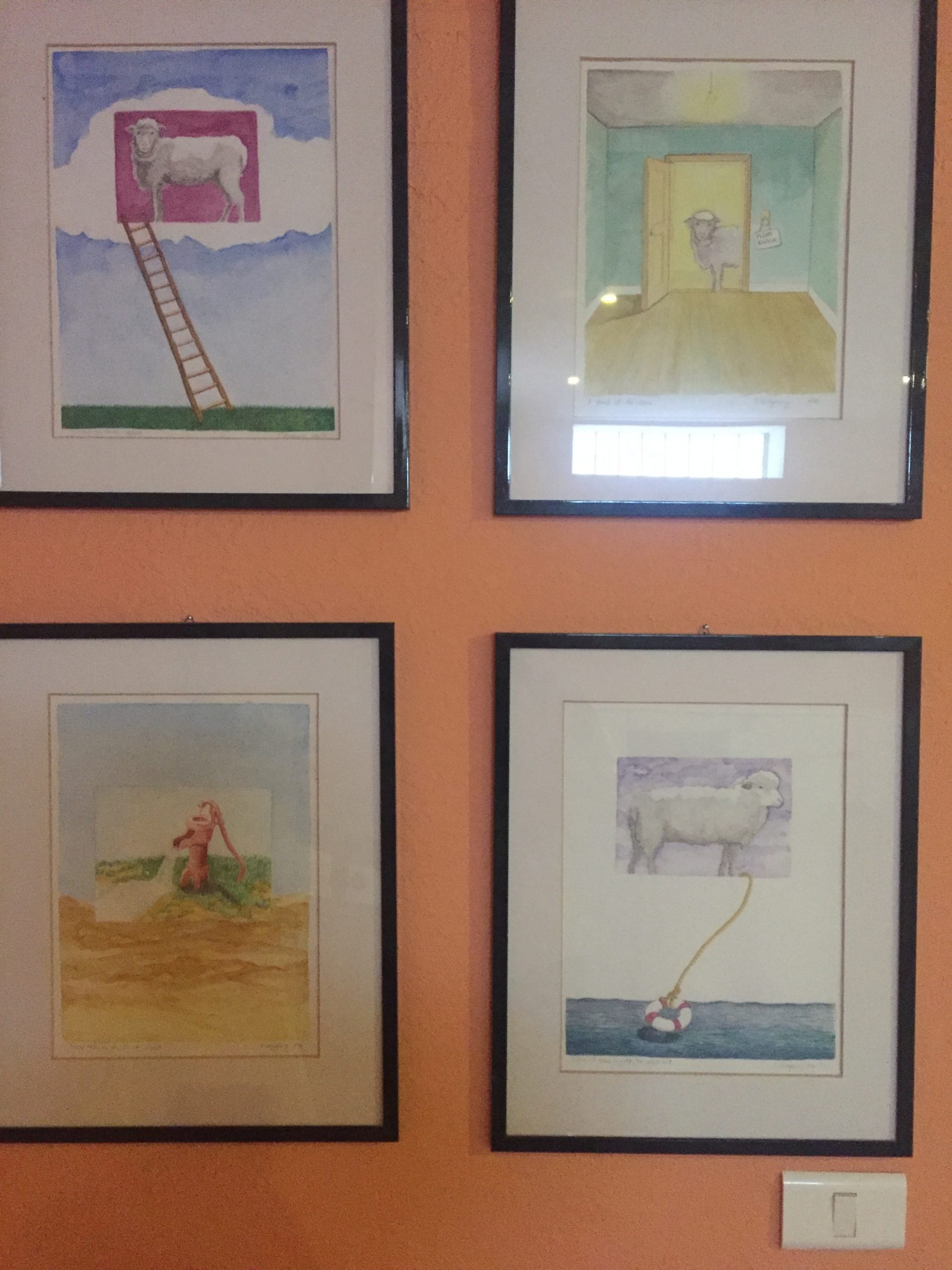
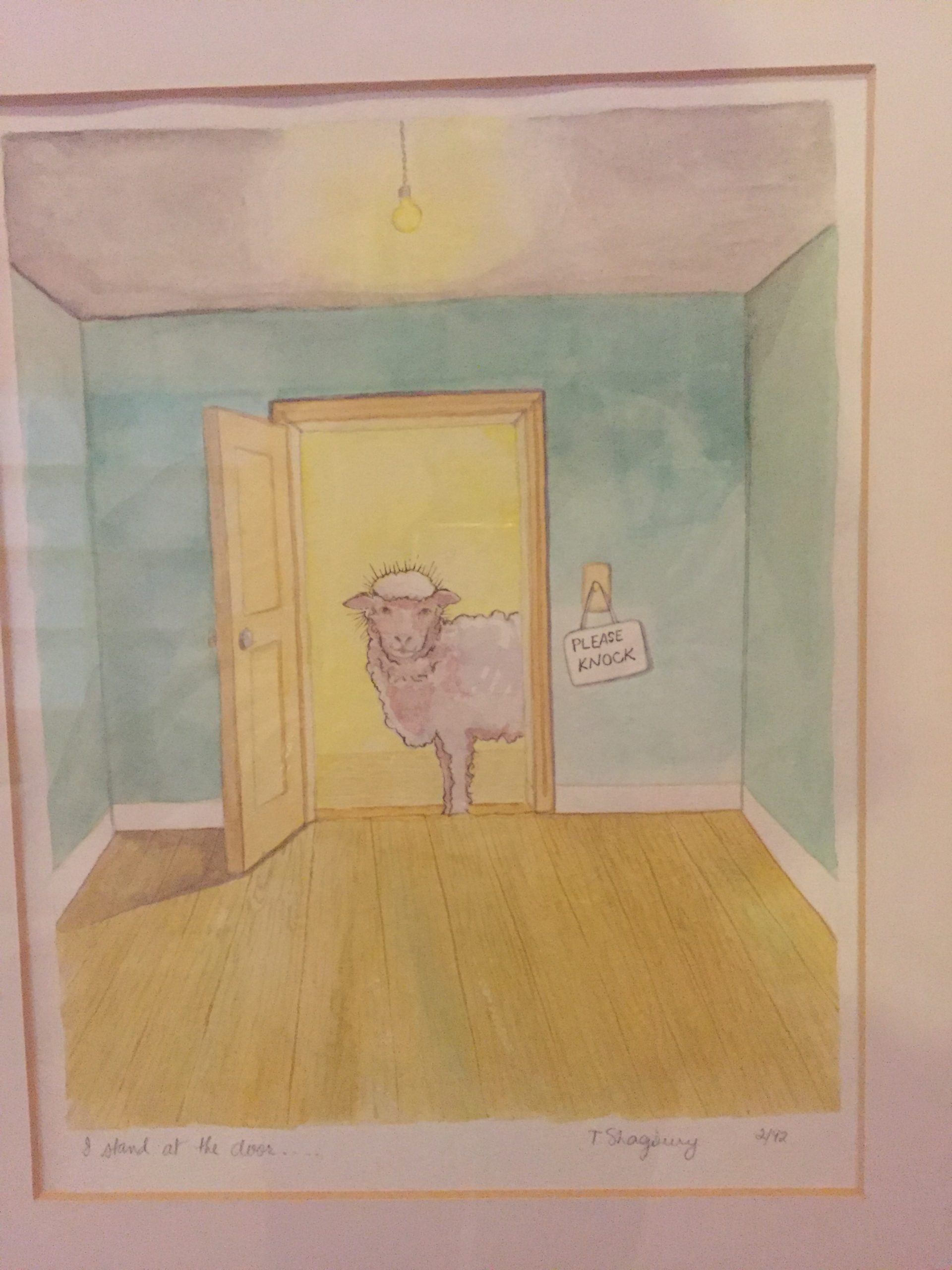
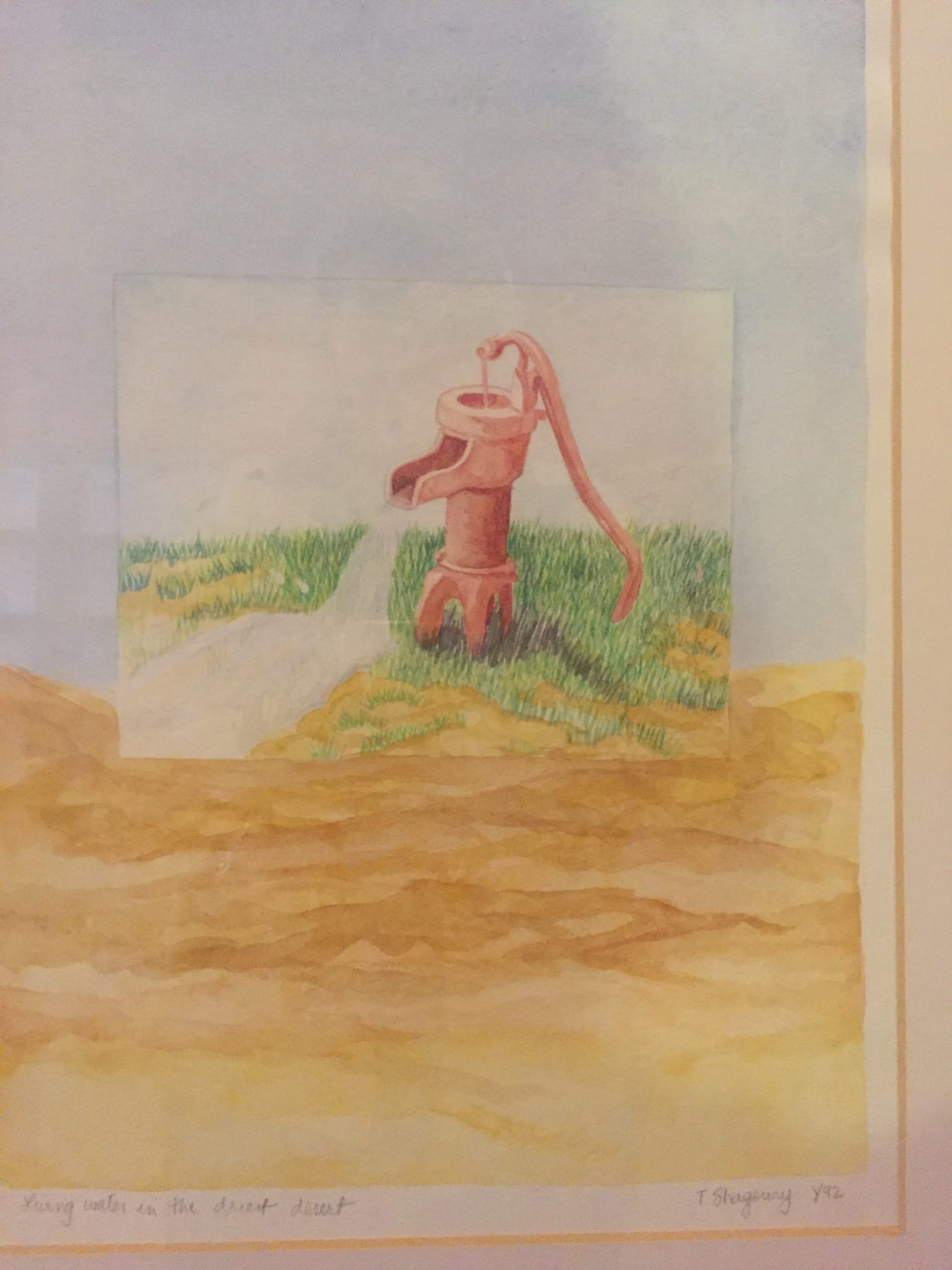
The four paintings were arranged in a group and during the opening, two young Syrian men were discussing those paintings. I went over and stood behind them. I heard them say something like: I’m not sure what they mean, but it seems the artist is trying to say something. They tilted their heads, pondering, and did not move on right away. For them it was something different I guess. Apologies for the quality of the photos, but I was surprised to find them on the wall of my studio the last time I visited Syria.
I have to admit that is when I learned to love sneaking up behind people at art shows to hear them discuss my paintings. I find it so interesting and an especially good strategy for an introvert.
As an artist of faith I am more interested in portraying God’s truth, my relationship to the truth and what it means to me. I would say my guiding principle is: if it’s true for me, or happened with me, it could be true for others. Therein is the value of sharing.
My next challenge is to try to paint abstract paintings with water color. I find it terrifying, which is exactly why I’m going to try. I guess it will be OK to video the stumbling blocks I hit and how awful it can be learning a new approach. Hopefully, something good will come out the other side.
Again, that why we call it creative practice, right?
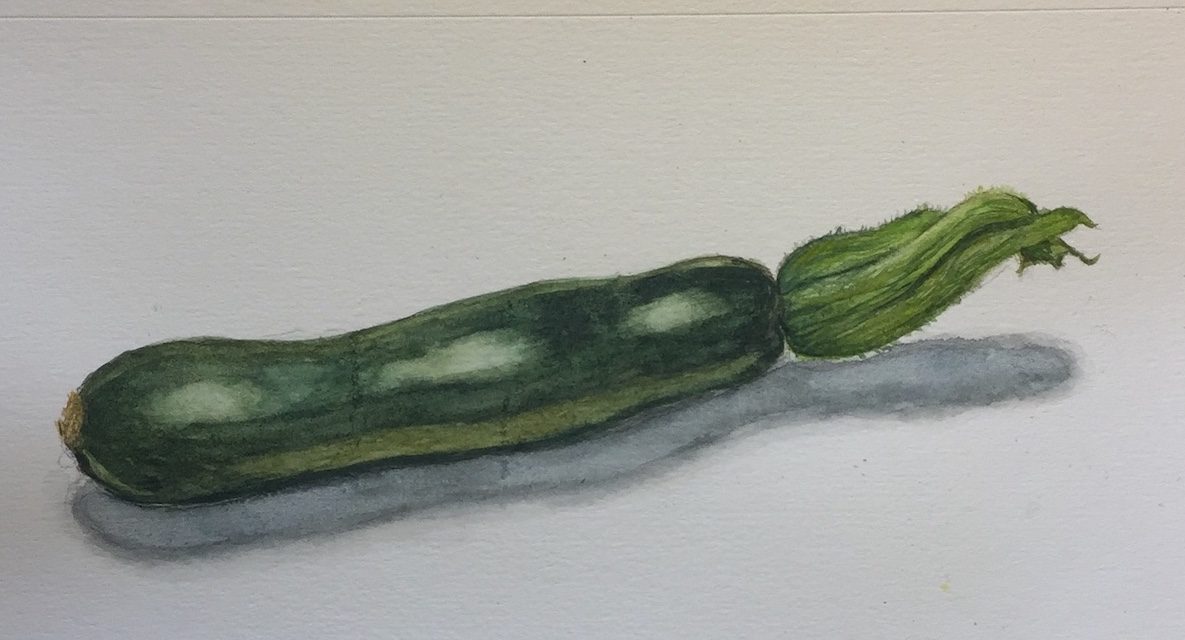
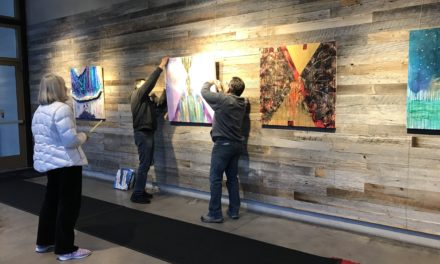
![A [not so] Hidden Aspect of Creative Practice](https://whisperingtruth.com/wp-content/uploads/2020/04/finished-440x264.jpg)
